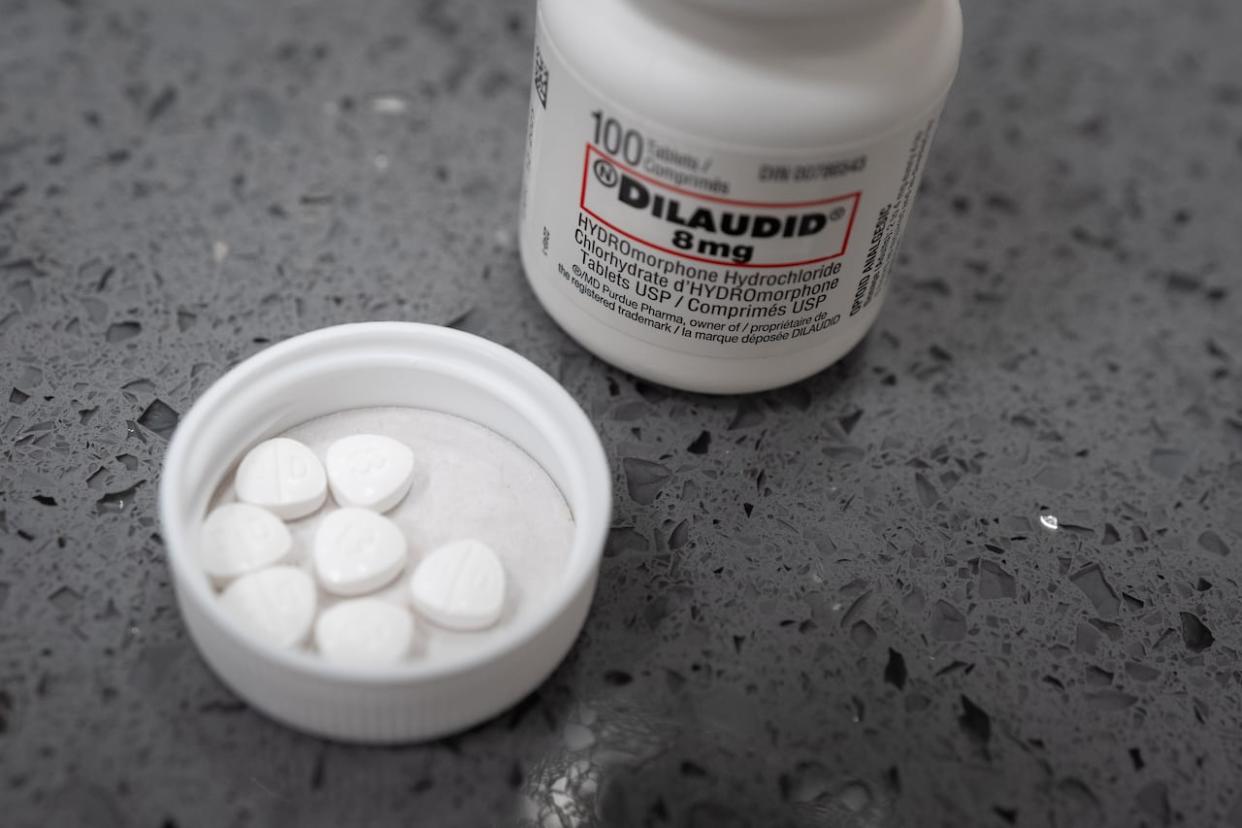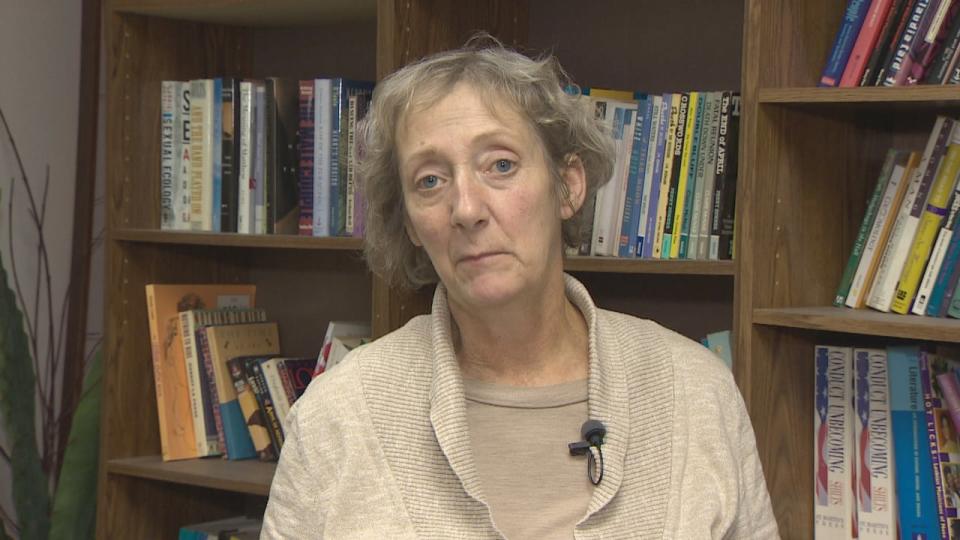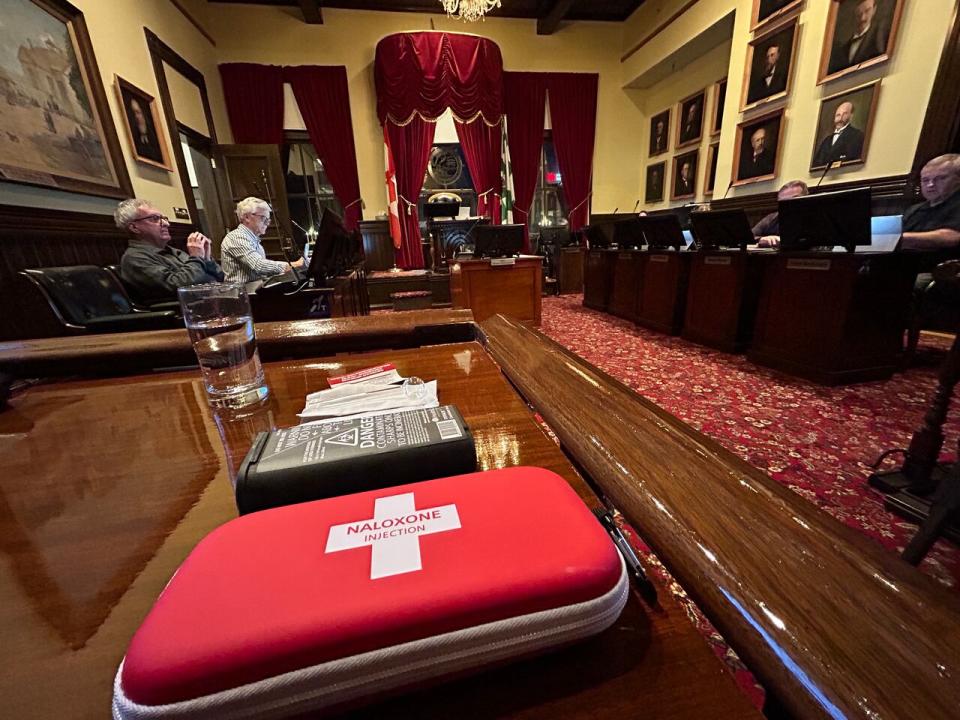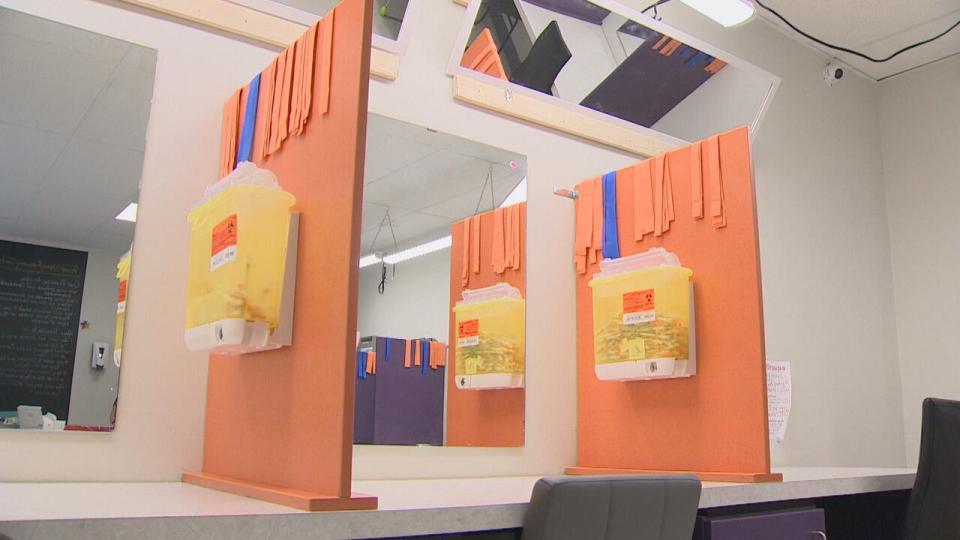Drug-related deaths hit record high in N.B.

New Brunswick saw its highest number of apparent overdose-related deaths in 2022, according to a report from the Department of Health, while naloxone use has skyrocketed.
The quarterly report puts 2022 as the deadliest year on record.
It's a reality Julie Dingwell sees every day in her work as executive director at Avenue B Harm Reduction in Saint John.
"We're seeing people die. We go in every Monday morning thinking, 'Oh, who died on the weekend,'" she said.

Julie Dingwell, in this file photo, is executive director of Avenue B Harm Reduction. 'We are losing all of these precious people at a time when they should be enjoying the best years of their lives.' (CBC)
"We know that one New Brunswicker is dying about every three-and-a-half days. And it's not okay … the pain and the suffering that happens with each and every death, that's what we're not talking about."
Accidental deaths for which the cause has yet to be determined, from opioids and stimulants such as methamphetamine, were at record highs in 2022, according to the report.
And in 2023, New Brunswick distributed and administered the highest number of take-home naloxone kits.
The Department of Health declined several requests from CBC News to provide an interview on the report.
In an email, department spokesperson Sean Hatchard said opioid-related toxicity deaths are still "below national levels" in New Brunswick.

New Brunswick reported an all-time high for the number of naloxone kits distributed and administered in 2023. (Tony Davis/CBC)
Drug toxicity on the rise in N.B.
The number of opioid-related deaths involving fentanyl is on the rise, according to Public Health.
The report warns the use of naloxone to reverse overdoses "may not be sufficient," as the supply increasingly includes stimulants, such as benzodiazepines.
In prescription form, benzodiazepines are typically prescribed as a sedative, but are dangerous when paired with an opioid like fentanyl, because the sedation increases the risk of an overdose, according to Health Canada.
The New Brunswick update comes as a report from the Canadian Medical Association Journal shows young-adult life expectancy nationwide is increasingly being cut short by opioids.
That's largely due to substances like fentanyl getting added to the supply and increasing the potency, lead author Shaleesa Ledlie said, making it easier for a user to overdose by mistake.
We are losing all of these precious people at a time when they should be enjoying the best years of their lives.
- Julie Dingwell, Avenue B
Western Canada now sees the brunt of that toxic supply, Ledlie said, but if current trends continue, New Brunswick could see the same in a matter of years.
University of New Brunswick professor Eric Weissman said the issue of toxicity is only getting worse.
A former drug user and member of a regional harm reduction taskforce, he said government regulation will be key to keeping toxic additives out of the supply.
"Whatever the drug they're taking, it's usually cut with things that are highly toxic in order to amplify the effect and increase the dependence on it," he said.
It's a trend that's made Dingwell's work "downright painful" some days.
"We have a wall where we put up all of our obits. And yesterday I stood there looking at it. And I seldom cry, but I was crying," she said.
"They are mostly all young. So we are losing all of these precious people at a time when they should be enjoying the best years of their lives."
Experts call for more harm reduction programs
New Brunswick can look to other provinces as it responds to the growing problem, Ledlie said.
Both Ledlie and Weissman point to the importance of expanding and increasing harm reduction programs, rather than focusing on abstinence.
"In places like British Columbia and Ontario, we saw things like safer opioid supply programs," Ledlie said.
"These have been brought out more in recent years on smaller scales, but there's emerging evidence now showing that people that are enrolled in these programs, it has really positive impacts on their life. And, importantly, it helps reduce the risk of overdoses."
Fredericton's River Stone Recovery Centre is one such program in New Brunswick, allowing patients with treatment-resistant opioid-use disorder to self-administer prescribed liquid hydromorphone on site.

An injection room at Fredericton's River Stone Recovery Centre, which allows participants with treatment-resistant opioid use disorder to get an individualized liquid hydromorphone prescription that can be taken up to three times each day by self-injection in the clinic. (Jonathan Collicott/CBC)
Ledlie said safe consumption sites are another harm reduction option for communities.
The province funded a safe injection site in Moncton through Ensemble Greater Moncton, Hatchard noted.
"Harm reduction plays a critical role in the inter-departmental action plan," he said.
Action on affordable housing will also help address substance abuse, Weissman said.
"How do you help somebody manage their drug use or be safe if they don't have housing?" he said. "It forces people to live under the influence of what we call survival anxiety, [so] that self-medication of any kind is absolutely necessary."
Ultimately, Weissman said, a public perspective shift when it comes to opioid use must accompany any harm reduction strategy.
"Knowing that they're going to take them and we can't address the systemic issues immediately, we have to find a way to help people take them so they don't die from it."

